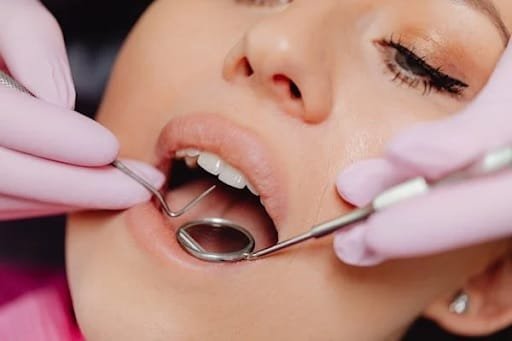A recent Shigella outbreak has been linked to Longhorn Steakhouse, leaving several customers ill after dining at the popular restaurant chain. Shigella is a highly contagious bacteria that spreads through contaminated food or water, often causing severe gastrointestinal distress. For those affected, symptoms include stomach cramps, diarrhea, fever, and vomiting, sometimes leading to long-term health complications. This incident has raised serious concerns about food safety and restaurant hygiene practices.
The outbreak has prompted health officials to investigate the source of contamination, while Longhorn Steakhouse takes measures to address the issue and regain customer trust. Health authorities are closely examining the restaurant’s food handling and hygiene practices to identify lapses that may have contributed to the spread of the bacteria. Meanwhile, affected individuals are seeking medical attention, and some may face long-term health challenges due to the severity of their symptoms. This situation underscores the importance of stringent food safety protocols and the potential consequences when those standards are compromised.
Understanding the Shigella Bacteria and Its Health Risks
Shigella is a bacteria that primarily affects the digestive system, leading to intense symptoms such as diarrhea, fever, and abdominal pain. The bacteria spread easily through contaminated food or water, making it particularly concerning in restaurant environments. The most common way people contract Shigella is by ingesting food prepared by someone who hasn’t properly washed their hands, leading to cross-contamination.
In severe cases, Shigella infection can result in dehydration, hospitalization, and long-term gastrointestinal issues. Vulnerable populations, including young children, the elderly, and those with weakened immune systems, are at an increased risk for serious complications. Understanding the bacteria is crucial in grasping the full scope of the potential health risks posed by an outbreak.
How the Outbreak at Longhorn Steakhouse Unfolded
The Longhorn Steakhouse Shigella Outbreak is believed to have originated from contaminated food, potentially due to improper food handling or hygiene practices among staff. Health officials are working closely with the restaurant chain to trace the source of the contamination and identify all affected locations. Initial reports indicate that several customers developed symptoms of Shigella infection shortly after dining at various Longhorn Steakhouse locations.
As the investigation unfolds, authorities are urging anyone who dined at Longhorn Steakhouse and experienced symptoms to seek medical attention and report their illness to health officials. Early detection and reporting are critical in controlling the spread of Shigella and preventing further cases.
Impact of the Shigella Outbreak: How Widespread Was It?
According to the Centers for Disease Control and Prevention (CDC), Shigella infections account for approximately 450,000 cases annually in the U.S. alone, with foodborne outbreaks like this one being a common source of transmission. Most of the infected individuals in this outbreak reported eating at various Longhorn Steakhouse locations within the past weeks. The number of cases continues to rise as more customers come forward with symptoms.
The outbreak has affected customers across multiple states, with [specific state/city] reporting the highest number of cases. “Shigella can be highly contagious and is often spread through food contaminated by an infected person who practices poor hygiene,” states the CDC. Vulnerable groups, including young children, the elderly, and those with compromised immune systems, are at an increased risk of developing severe illness. Health authorities are working diligently to contain the outbreak and prevent further infections.
Symptoms of Shigella Infection and When to Seek Medical Help
Shigella infection often begins with symptoms such as watery or bloody diarrhea, fever, stomach cramps, and nausea. These symptoms typically appear one to two days after exposure and can last for up to a week. In some cases, severe dehydration can occur, requiring medical intervention.
It is essential for individuals experiencing prolonged or severe symptoms to seek medical attention immediately. Left untreated, Shigella can lead to complications such as reactive arthritis or hemolytic uremic syndrome, which can have lasting effects on health. Quick diagnosis and treatment with antibiotics can help reduce the severity and duration of the illness.
Preventing Shigella Outbreaks: Best Practices for Restaurants
Restaurants play a critical role in preventing the spread of foodborne illnesses like Shigella. Ensuring proper handwashing practices, maintaining food safety protocols, and regularly sanitizing kitchen areas are essential to prevent contamination. Staff members who show symptoms of illness should be required to stay home to avoid spreading bacteria to food or fellow employees.
Additionally, restaurants must follow stringent guidelines for food storage, preparation, and handling. By adhering to these best practices, establishments like Longhorn Steakhouse can significantly reduce the risk of future outbreaks, safeguarding both their customers and their reputation.
Legal and Financial Repercussions for Longhorn Steakhouse
In the wake of the Shigella outbreak, Longhorn Steakhouse faces potential legal action from affected customers. Those who fell ill may pursue compensation for medical expenses, lost wages, and pain and suffering caused by the outbreak. Class action lawsuits could also emerge, depending on the scale of the outbreak and the number of individuals impacted.
In addition to legal challenges, Longhorn Steakhouse could face significant financial losses due to a decline in customer confidence. Restaurant closures, fines from health authorities, and a damaged reputation could all contribute to long-term financial repercussions for the chain.
The Role of Health Departments in Investigating Foodborne Illnesses
Local and state health departments play a vital role in investigating foodborne illness outbreaks like the one linked to Longhorn Steakhouse. These agencies are responsible for identifying the source of the outbreak, ensuring that contaminated food is removed from circulation, and implementing corrective measures to prevent future incidents.
Health officials also conduct routine inspections of restaurants and other food establishments to ensure compliance with food safety standards. In the case of an outbreak, they may require temporary closures of affected restaurants and oversee the disinfection and sanitation of the premises before reopening.
Customer Reactions and Responses to the Shigella Outbreak
News of the Shigella outbreak at Longhorn Steakhouse has sparked concern among customers, with many expressing fear and frustration over the potential health risks associated with dining at the restaurant. Some patrons have taken to social media to share their experiences, while others have vowed to avoid the chain until it can demonstrate improved safety measures.
For Longhorn Steakhouse, restoring customer trust will be a significant challenge. Transparency, swift corrective actions, and clear communication with the public will be essential in rebuilding its reputation and reassuring customers that their safety is a top priority.



